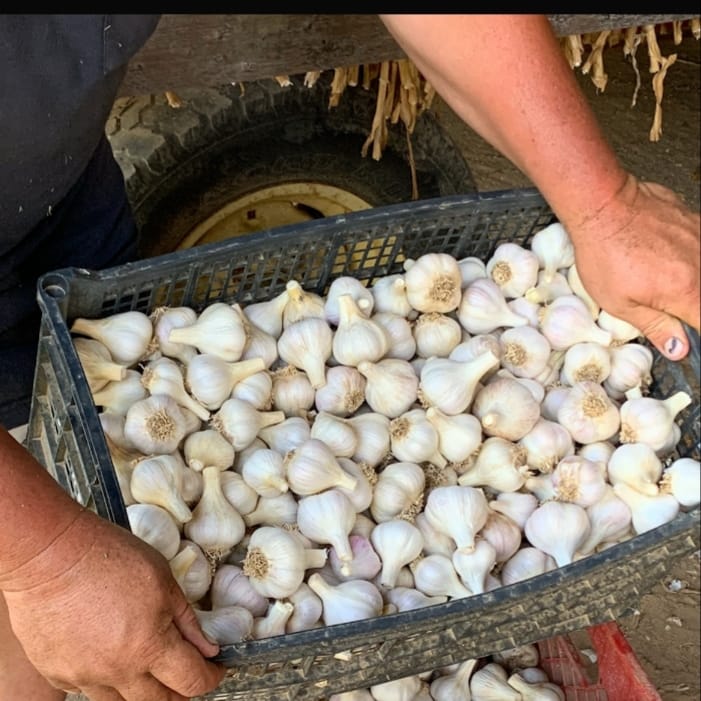There are two main types of garlic: hardneck and softneck. A few key differences: softneck tends to be smaller and stores longer (think long braided ristras), while hardneck cloves tend to be larger and more flavorful. Softneck varieties grow better in warmer climates, so if you live in a place with cold winters (like Pennsylvania) planting softneck in the Fall isn't a great idea (plant in the Spring!). Hardneck varieties are perfect for fall planting, as they are much hardier and do well in cold climates. Here are some tips for successful planting this Fall:
1. Know when to plant.
Plant in late Summer or early Fall. Garlic needs to have at least four to six weeks of growth before the first frost hits. This allows the garlic to establish roots in the soil, as the garlic goes dormant during the winter months. It's best to plant your garlic six to eight weeks before the first expected frost, just to be safe!

2. Purchase quality seed garlic.
We make this part easy: Make sure you buy high quality seed to start with. Bulbs/cloves should be healthy and vibrant. Avoid using grocery store garlic for planting purposes as it is often shipped from far away and may not be the proper variety for your specific soil or growing conditions. You also want to avoid any garlic that has been treated with pesticides or fungicides (we never treat our garlic with chemicals!).

3. Prepare your seed garlic.
Separate the individual cloves from each other (each clove is an individual seed), keep as much of the paper wrapper in tact as possible (this protects the seed in the soil from rot and damage before it sprouts). Fill a bowl or bucket with enough fresh (well or distilled) water to cover all cloves. Treated water can contain chlorine and other chemicals that could affect germination. Before adding in the garlic mix in a spoonful of baking soda. Soak cloves overnight (or at least 12 hours) in water to ensure successful sprouting.

4. Prepare the soil.
No matter where you will be growing your garlic, it's essential that the soil be fertile and well-draining. The best way to ensure this is to add compost at planting time. The trench method is an effective way to plant garlic. Filling the bottom of the trenches with compost creates a fertile, well-drained environment for the seed garlic. To use the trench method: Dig trenches that are 3-4 inches deep and a few inches wide. Fill the trench halfway up with compost. Plant each clove with the pointy end facing up. Cover the tips of the garlic with a few inches of soil, level to the surface. If you are planting multiple rows, keep them about four to six inches apart.

Shop our chemical-free worm castings fertilizer
5. Keep your garlic plants weed free.
It is extremely important to keep weeds at bay. Weeds compete for the same nutrients as your garlic does, so keeping weeds away from your garlic plants will help ensure larger and tastier bulbs. The best way to do this is with mulch. As soon as you plant your garlic, cover with straw or shredded leaves to help keep moisture in the soil and keep weed seeds from settling into the soil. Keep your plants well-watered. If it doesn't rain, water your plants every three to four days. Once the crop germinates add a few more additional inches of mulch to insulate through the winter.

As mentioned above, garlic will go dormant in the Winter and come back to life in the Spring. The crop is ready to harvest when the tops and foliage brown off (typically between late June and late July). Once harvested, hang to dry in a cool, dark place for a few weeks. The garlic will keep for 6-9 months. Keep some of the best bulbs to replant in the fall for an even better crop the following year.
Happy Planting!


